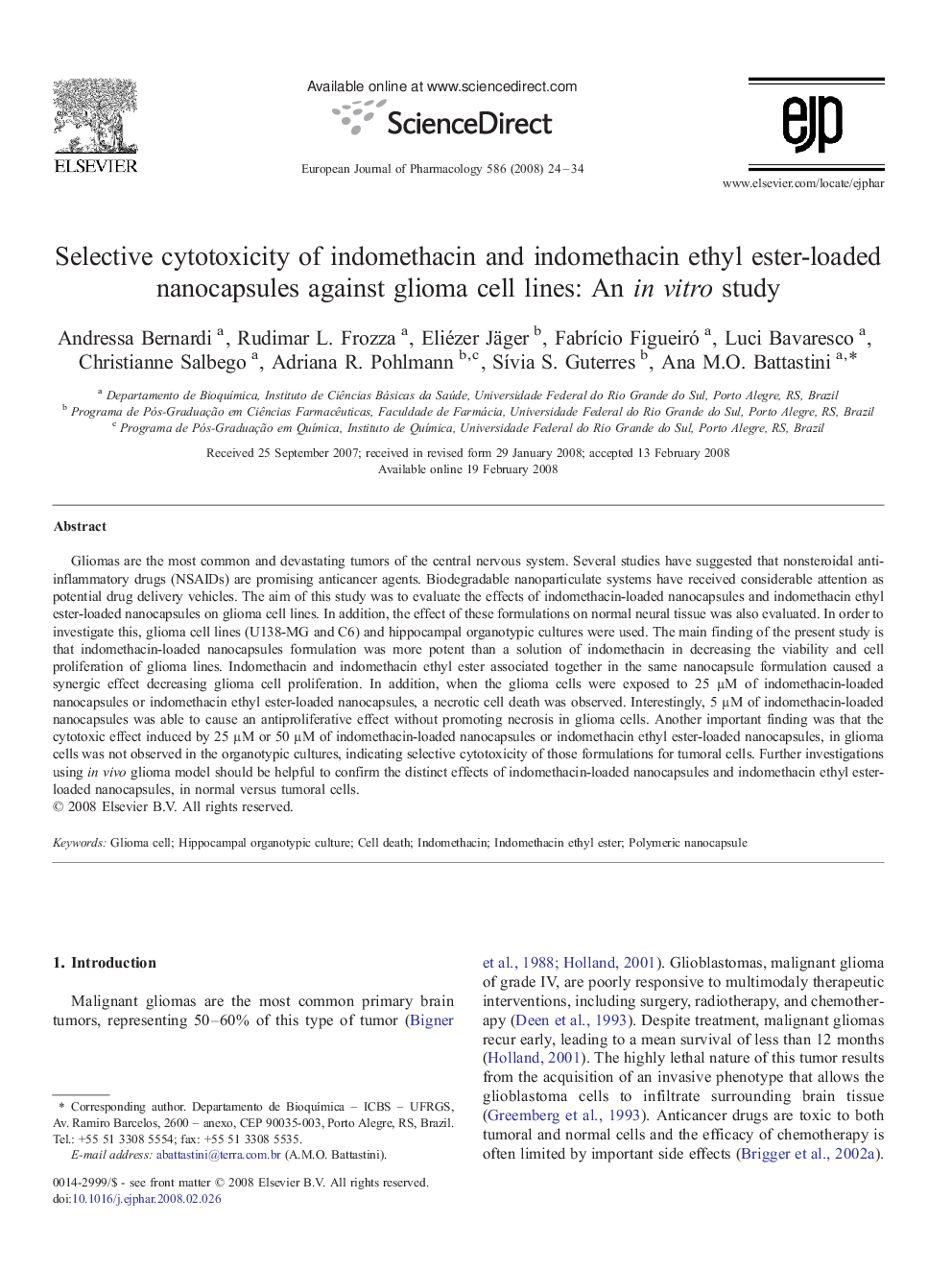| Article ID | Journal | Published Year | Pages | File Type |
|---|---|---|---|---|
| 2535236 | European Journal of Pharmacology | 2008 | 11 Pages |
Gliomas are the most common and devastating tumors of the central nervous system. Several studies have suggested that nonsteroidal anti-inflammatory drugs (NSAIDs) are promising anticancer agents. Biodegradable nanoparticulate systems have received considerable attention as potential drug delivery vehicles. The aim of this study was to evaluate the effects of indomethacin-loaded nanocapsules and indomethacin ethyl ester-loaded nanocapsules on glioma cell lines. In addition, the effect of these formulations on normal neural tissue was also evaluated. In order to investigate this, glioma cell lines (U138-MG and C6) and hippocampal organotypic cultures were used. The main finding of the present study is that indomethacin-loaded nanocapsules formulation was more potent than a solution of indomethacin in decreasing the viability and cell proliferation of glioma lines. Indomethacin and indomethacin ethyl ester associated together in the same nanocapsule formulation caused a synergic effect decreasing glioma cell proliferation. In addition, when the glioma cells were exposed to 25 µM of indomethacin-loaded nanocapsules or indomethacin ethyl ester-loaded nanocapsules, a necrotic cell death was observed. Interestingly, 5 µM of indomethacin-loaded nanocapsules was able to cause an antiproliferative effect without promoting necrosis in glioma cells. Another important finding was that the cytotoxic effect induced by 25 µM or 50 µM of indomethacin-loaded nanocapsules or indomethacin ethyl ester-loaded nanocapsules, in glioma cells was not observed in the organotypic cultures, indicating selective cytotoxicity of those formulations for tumoral cells. Further investigations using in vivo glioma model should be helpful to confirm the distinct effects of indomethacin-loaded nanocapsules and indomethacin ethyl ester-loaded nanocapsules, in normal versus tumoral cells.
